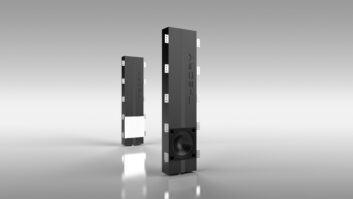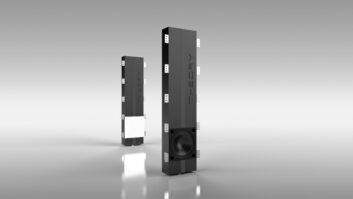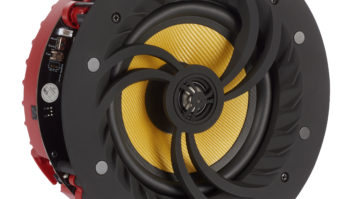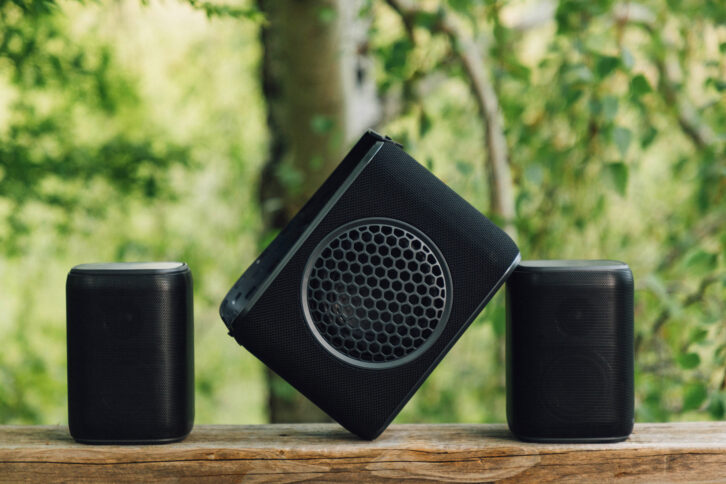
Subwoofers are much more than just another speaker; they are the cornerstone of depth and immersion in both colossal and compact audio systems. They take the low bass and make it much more audible to your ears, allowing you to enjoy your movie or music to its full potential.
Traditionally associated with thunderous home theaters and professional sound stages, the evolution of subwoofer technology has also made significant strides in enhancing smaller, portable systems. We will delve into the essence of subwoofers, their performance metrics, the distinctive impact they have across various audio setups, their rising popularity, and the trends shaping their future.
But first, a little history…
The Origin Story
- The first official subwoofer was created in California in 1964 by Raymon Dones. The motivation behind the first subwoofer was in response to the lack of bass from regular speakers, enhancing the sound quality and improving the overall listening experience. The subwoofer could reproduce frequencies as low as 15 Hz while remaining distortion-free.
- One of the earlier commercially available subwoofers was developed by Ken Kreisel in the late 1960s, former president of the Miller & Kreisel Sound Corporation in Los Angeles. In addition, Kreisel created the first satellite speaker and subwoofer system, which he dubbed David and Goliath.
- Interestingly, the first use of a subwoofer in a recording session was in 1973 for mixing the Steely Dan album Pretzel Logic when recording engineer Roger Nichols arranged for Kreisel to bring a prototype of his subwoofer to Village Recorders.
Understanding Subwoofers

At its core, a subwoofer is designed to reproduce the lowest frequencies of the audio spectrum (bass), typically ranging from 20 Hz to 200 Hz. These frequencies are fundamental to creating a rich, full-bodied sound experience. The unique construction of subwoofers, with larger drivers and more robust amplification than their speaker counterparts, allows them to move a significant volume of air necessary to produce these low tones. This capability to render deep bass is what sets subwoofers apart, enriching audio content with dimension and physical sensation.
Performance Across Different Systems
Subwoofer performance is crucial, characterized by its ability to deliver precise, distortion-free bass at varying volumes. Quality subwoofers exhibit tight control over their drivers, ensuring accurate sound reproduction. This precision is vital, whether in a full-sized home theater system or a portable setup, as it defines the clarity and realism of the audio experience.
Subwoofers in Large Audio Systems
In large systems, subwoofers handle the demanding low-frequency effects, allowing the main speakers to focus on mid- and high-range frequencies. This separation improves the overall audio clarity and detail by preventing the speakers from being overwhelmed.
The immersive experience provided by subwoofers in home theaters and concert settings is unparalleled, with every explosion or bass drop felt in the core of the listener’s being.
The Role of Subwoofers in Smaller, Portable Systems
The advent of advanced technology has seen the miniaturization of subwoofers without sacrificing their performance. In smaller, portable audio systems, a subwoofer can make a significant difference, offering a fuller and more balanced sound that defies the system’s physical limitations. The challenge in these systems is not just about producing bass but doing so in a way that integrates seamlessly with the rest of the audio without overwhelming it.
The Comparative Impact in Different-Sized Systems
While subwoofers contribute profoundly to large audio setups, their impact is arguably more pronounced in smaller systems. In large setups, the subwoofer’s role is to add depth and immersion, complementing an already capable set of speakers. However, in smaller systems, a subwoofer can transform the audio experience from flat and lifeless to vibrant and engaging, creating a more noticeable difference. The addition of a subwoofer in portable systems elevates the sound quality to a level that belies the system’s size, offering a listening experience that is both rich in bass and clear in the higher frequencies.

Popularity and Trends
Subwoofers have become indispensable in creating comprehensive audio solutions, their popularity underscored by their utility across both large and small systems. The demand for high-quality audio has driven the integration of subwoofers into a wide array of setups, from home entertainment centers to portable Bluetooth speakers.
Current trends in subwoofer development reflect a focus on compactness and connectivity. Innovations in driver materials and design have enabled the production of small yet powerful subwoofers suited for portable systems. Wireless technology has further enhanced the versatility of subwoofers, allowing for easier integration into existing setups without the clutter of cables.
Moreover, there is a growing consciousness towards sustainability in the audio equipment industry, with manufacturers exploring eco-friendly materials and more efficient production methods. This shift not only reflects a commitment to environmental stewardship but also appeals to a consumer base increasingly concerned with the ecological impact of their purchases.
Power Requirements
Subwoofers require tremendous power. For a given speaker, we split the power between the tweeter and mid-bass driver. If we were to add a third driver – the bass driver – to the same speaker, we’d have to split the energy further, losing precision and volume. By putting the subwoofer into its own enclosure, with its own power source, the wattage is split in a more productive way.
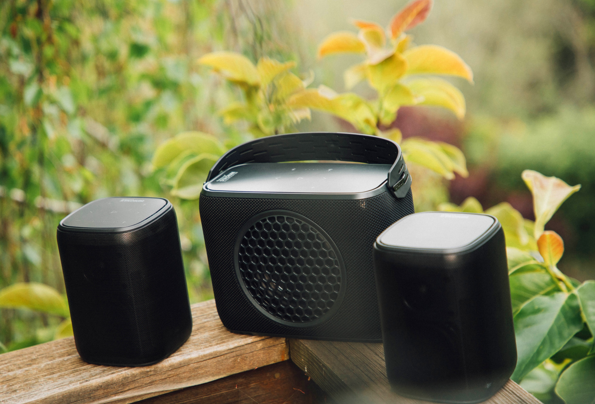
Subwoofer Placement
There are various trains of thought on where to position subwoofers for ideal performance. Placement of the subwoofer would likely be best in a different location than where you would place your satellite. Optimally, it should be placed on a hard surface and about six inches from a wall, as there is a bass drum on the back.
Conclusion
Subwoofers play a transformative role in both large and small audio systems, providing the essential depth and immersion that elevates the listening experience. Their impact is particularly noticeable in portable systems, where they defy physical limitations to produce a rich, balanced sound. As technology advances, the integration of subwoofers into a variety of audio setups has become more seamless, reflecting their growing popularity and the trends toward compactness, connectivity, and sustainability.
Whether part of a massive home theater setup or a compact portable system, subwoofers remain the heartbeat of modern audio systems, essential for anyone seeking the fullest sound experience.
About the Author
Jeff Leitman is the CEO of Rocksteady, which aims to redefine audio excellence with high-fidelity, connected speaker systems that blend intuitive simplicity with unparalleled functionality. Besides its signature line of Bluetooth Stadium speakers that create immersive sound, the company offers the only portable subwoofer.
See also: Creative Introduces The Pebble X and Pebble X Plus Desktop Speakers







